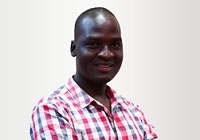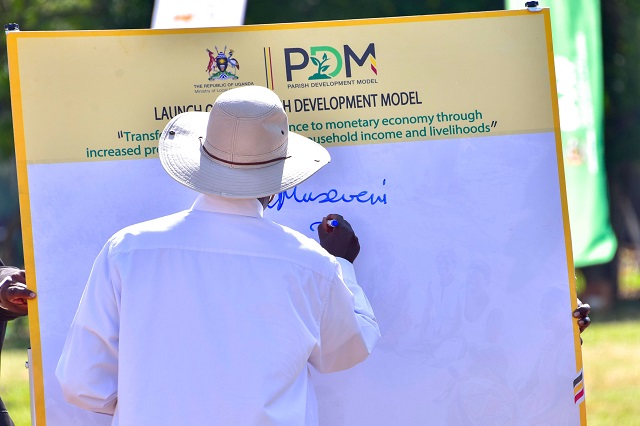By Walter Akena
In February 2022, the President launched the Parish Development Model (PDM), the latest of a series of poverty eradication programs that the Government of Uganda has implemented. The model seeks to propel the 39% of Uganda’s population still stuck in the subsistence economy, into the money economy.
Though the seven-pillar model has been widely applauded as the masterpiece of the country’s poverty alleviation artworks, challenges that threaten the full realisation of its objectives have already been registered- requiring urgent attention. These include; cases of ghost beneficiaries, soliciting for bribes from beneficiaries by enforcers of the model, beneficiaries missing money because of missing data; and elite capture among others.
The model was designed to follow a logical pattern of key processes, with each, seamlessly feeding into another to create the necessary systems and structures for holistic poverty eradication. These include; creating data systems that constantly feed the whole government with real-time information concerning various interventions at the parish level, organising farmers at the parish level and other value chain actors through area-based commodity clusters, providing agricultural extension and educating farming households, building infrastructure and systems that support processing and marketing, strengthening participatory planning by local communities, and providing access to financial services to households that operate in the subsistence economy.
In its maiden year, emphasis has been put on the third pillar of financial inclusion, disrupting the implementation of the model- at least in terms of its target and strategy.
The primary target of the PDM is the 39% of Ugandans engaged in the production of goods and services whose returns are only enough or even unable to meet their basic needs.
Unfortunately, there is very little or no information regarding the composition of this category. The statistics that the Uganda Bureau of Statistics (UBOS) has about this section of the population are generic rather than specific. The most logical thing to do was, therefore, to identify and earmark the individuals who make up the 39% and where they reside by strengthening the Parish-Based Management Information System.
Lack of baseline data for the target beneficiaries has led to elite capture of the model. In Masaka City for instance, the model’s focal person admitted that PDM groups in the City were hastily formed to beat deadlines from the PDM National Secretariat, an indication that the targets were missed. Councillors in local governments, civil servants, and elites dominate the PDM SACCOs in several districts. This means monies will go to the non-intended categories hence effectively defeating the purpose of the model.
The fact that agriculture is the dominant economic sector in Uganda implies that efforts to combat extreme poverty should be directed toward increasing agricultural production and productivity, which is the primary focus of the model under the first pillar.
The challenges for agricultural productivity are multidimensional and include key issues such as; poor road infrastructures, limited access to extension services; limited access to the market, limited infrastructure for value addition, and negative mindset.
The poor road infrastructure obtaining in the vast part of the country’s rural areas for example increases transportation costs of agricultural produce to market, complicates access to agricultural inputs, and limits the profitability of income-generating businesses. Additionally, the unstable power supply in some parts of the country has limited the establishment of small-scale industries that process agricultural produce and thus contribute to value addition; in the process limiting opportunities for the creation of much-needed jobs.
There is also the challenge of limited access to the market by smallholder farmers. Markets in rural areas are disintegrated, and intermediaries hold excessive market powers, which they use to manipulate farmers. In addition, there is inadequate knowledge of the market size and requirements for different products.
Unless and until these challenges are addressed, farmers will continue to earn less for what they produce in the current market landscape, and in the process, fail to transition to the money economy.
By and large, the model can play a key role in driving socio-economic transformation for the country’s poorest individuals. However, its success largely depends on revisiting the original concept and the chronology of processes therein.

The writer, Walter Akena is a Research Officer under the Local Government Councils’ Scorecard Initiative at ACODE and can be reached at [email protected]
If you would like your article/opinion to be published on Uganda’s most authoritative news platform, send your submission on: [email protected]. You can also follow DailyExpress on WhatsApp and on Twitter (X) for realtime updates.



